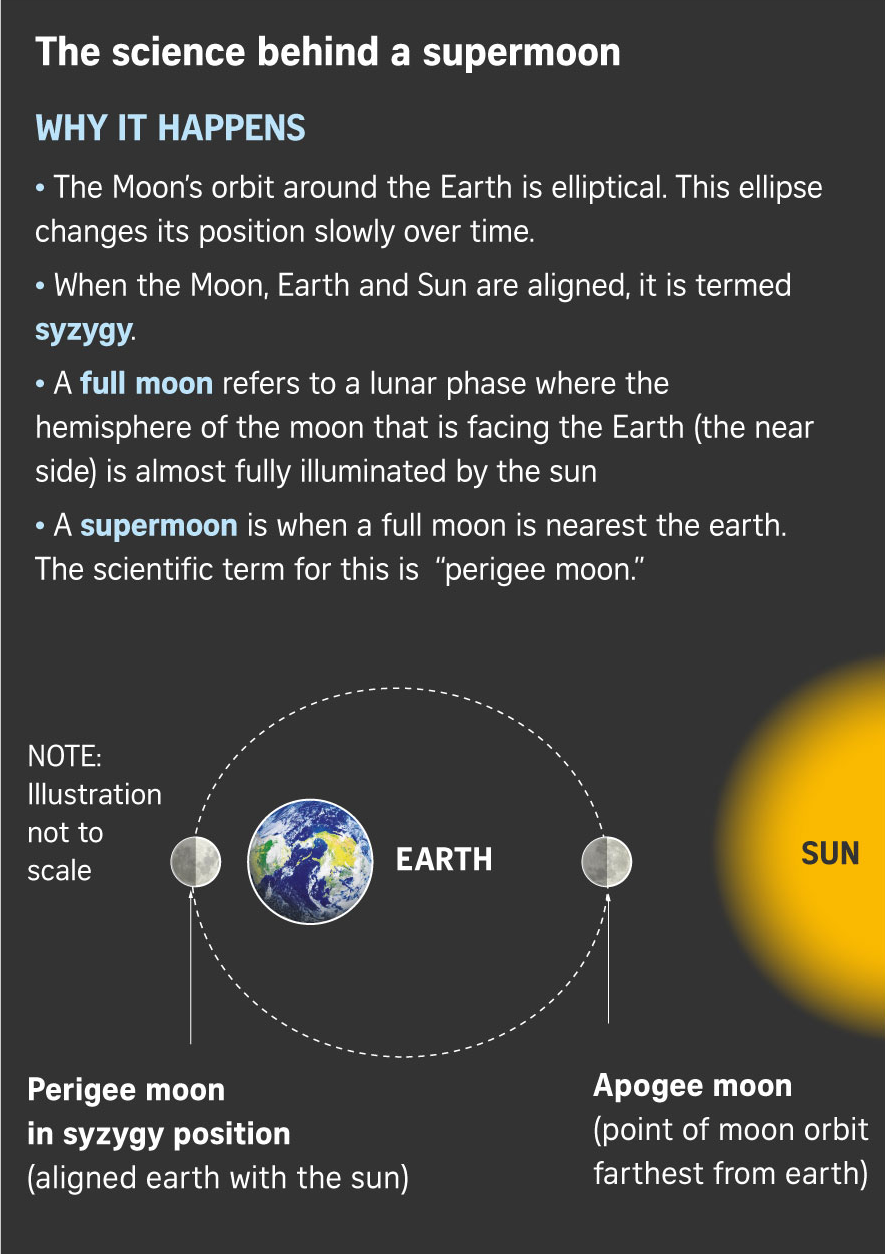Biggest supermoon of 2019 lights up sky on Tuesday


SINGAPORE - Singaporeans kept their eyes peeled to the sky for the supermoon on Tuesday night (Feb 19), when the full moon was said to be the biggest and brightest this year.
The supermoon coincided with the annual Lantern Festival, which marks the end of the 15-day Chinese New Year celebrations - or Chap Goh Meh.
A Science Centre Singapore spokesman said that if the sky was clear, the best time to view the phenomenon would have been at moonrise at around 7.30pm.
The best places to see it included locations such as East Coast Park and Labrador Park, which have a clear view of the eastern horizon.
Many astronomy enthusiasts and photographers flocked to Bedok Jetty on Tuesday, and had their cameras pointed the sky, even before the supermoon was visible from about 7.30pm.
Lecturer Jeffrey Fang, 40, told The Straits Times that he happened to be taking a stroll at the jetty at about 7pm when he noticed that the moon was "rounder than usual".
He said: "I went out for a walk as it was the Lantern Festival and I was pleasantly surprised to see the supermoon."
He added that he had only found out that it was a supermoon after his friends discussed it on social media.
He decided to stay past 9pm to admire the moon set against the changing colour of the sky, while sipping some wine, he added.
Meanwhile, social media users from across the world also shared their view of the supermoon, with sightings in Thailand and Japan, among others.
[embed]https://twitter.com/christiaanhart1/status/1097840952931020800[/embed]
[embed]https://twitter.com/MalibuPost/status/1097719977325453312[/embed]
[embed]https://twitter.com/JCMaherPhoto/status/1097692527908466693[/embed]
Supermoons occur when the moon's orbit is closest to Earth at the same time that it is full. This causes the moon to appear bigger and brighter in the night sky.

While the moon's brightness remains dependent on Singapore's weather conditions, the moon was expected to look "slightly larger" when compared with full moons in other months or with objects on the ground nearby.
"When the full moon is viewed by itself, one will hardly see a difference in the size and brightness," the spokesman added.
The moon's colour may also change if the Earth's atmosphere has more water vapour or smoke particles.
Another supermoon will light up the sky on March 21. While this will be smaller than the one on Tuesday, it will be "significantly larger" than the smallest full moon of the year, said the spokesman.
The first supermoon of 2020 is expected on March 9.
This article was first published in The Straits Times. Permission required for reproduction.